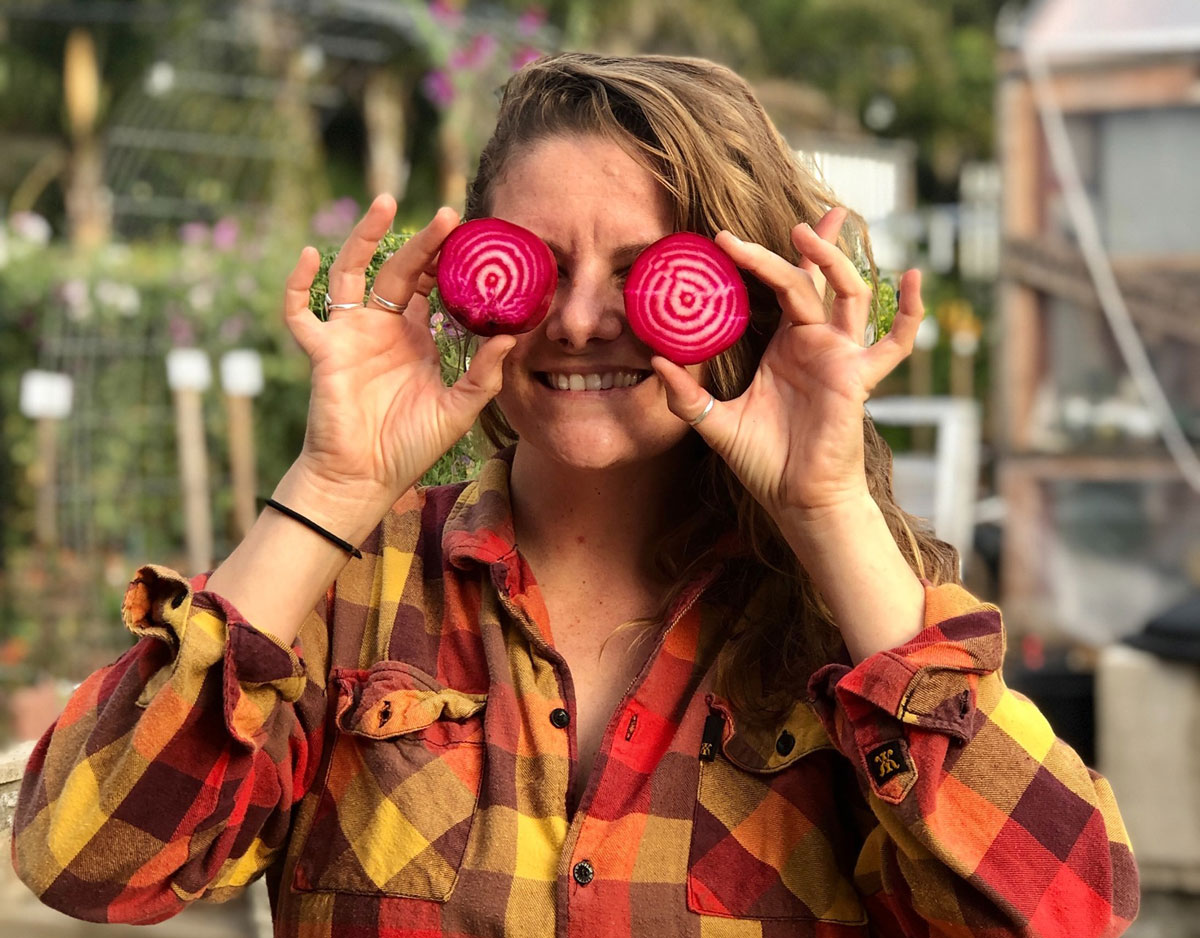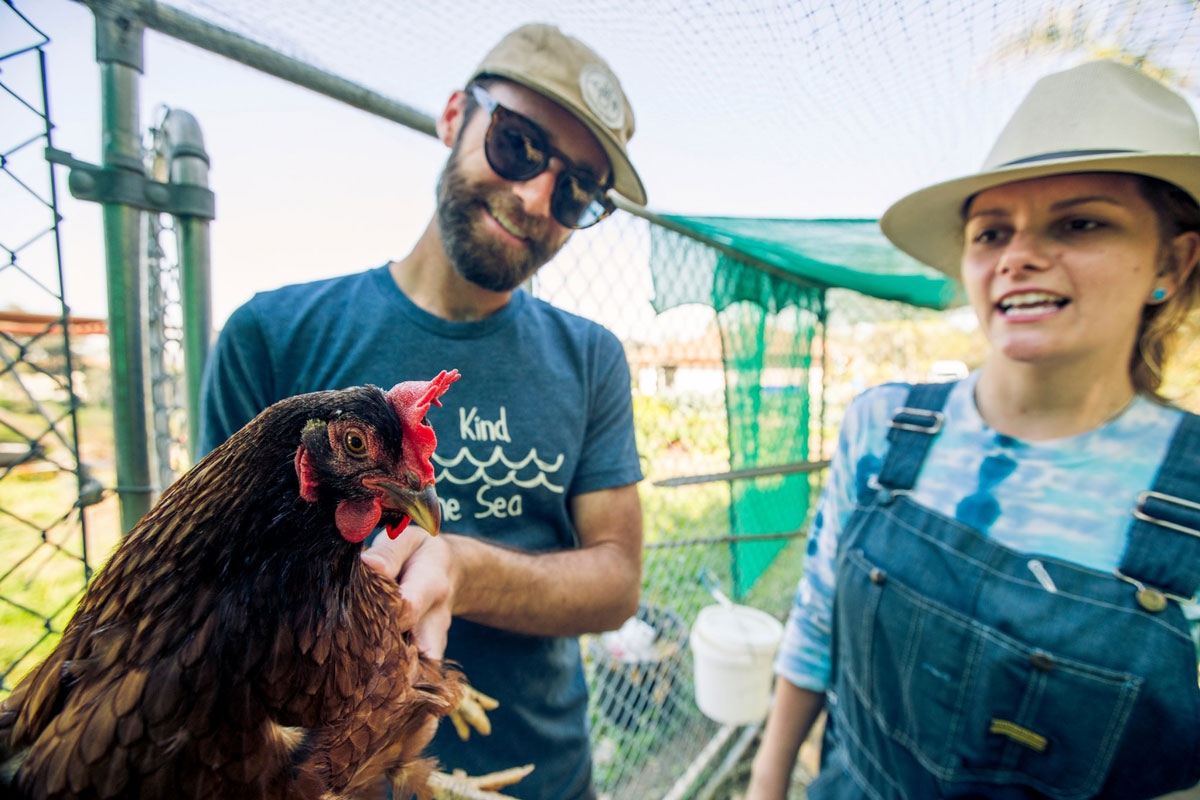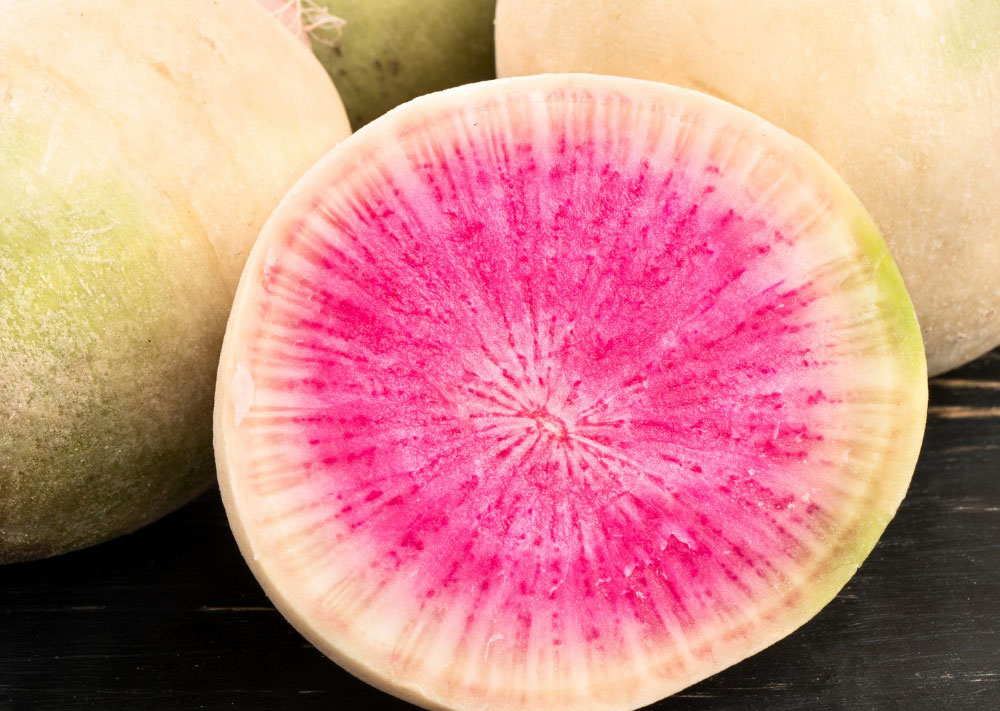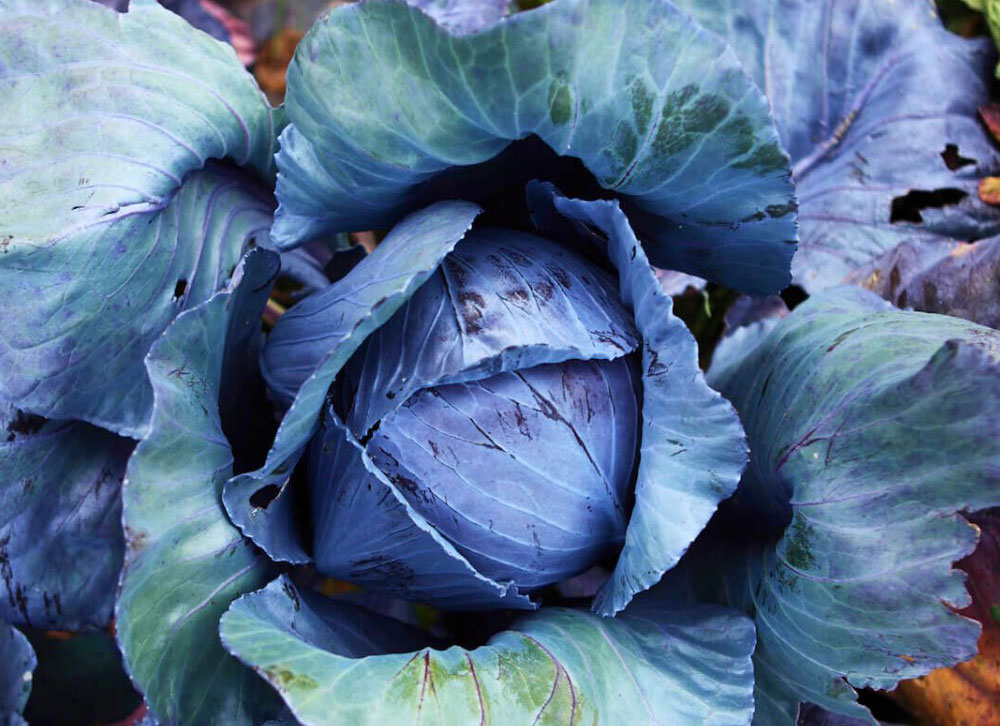Brijette Peña and her husband have given themselves the yeomen task of producing over 50 varieties of vegetables, flowers and herbs that not only are suited to the California climate, and have their origin in the Western part of the country.
The San Diego Seed Company began just 10 years ago, on a tiny plot of land in downtown San Diego.
Brijette explained her goals as we toured her small one-acre plot.
“I was inspired by time spent at Willow Farm where I was introduced to the Food Justice Movement. My husband and I have been here for ten years and recently leased property in Ramona.
“The amount of land there will allow us to grow on a much larger scale, and the price of water will be less since we have a well. We believe in sustainable growing practices, seed saving and healthy local food systems. We work with a wide range of nonprofit organizations to encourage these sustainable practices.”
Brijette said their “goal is to be able to fill all the orders and more. During CO-VID we received far more orders than we could possibly fill since many of the other seed companies had run out of seed.
“Now, we are producing and processing hundreds of seeds daily. Our goal is to be in distribution in all the independent garden centers in greater San Diego and North County.
“Each week we feature videos with a timely, seasonal theme to encourage gardeners to try new varieties such as Kajani Melon, Ethiopian Kale and Winter Green Mixture. We also teach classes at Anderson’s LaCosta Nursery and Oceanside Crop Swap,” Brijette said.

SAVING SEEDS AT HOME
The difference between the seed of the fruiting vegetable and a vegetable with an “umbrella” is that the seed appears on the exterior of the plant, which can be harvested by shaking and then processing the seeds through sieves.
For the home gardener, seed collecting can become a bit of an obsession in a healthy way.
Corn, sunflowers, peas and beans are probably the easiest to harvest since the size of the seed needs so little cleaning.
Once any gardener has started harvesting seed, the urge to walk through a friend’s garden or simply a local community vegetable garden, and search for that perfect seed head is irresistible at this time of year. Just ask permission of fellow gardeners!
Right now, sweet peas, calendula, morning glory, and any variety of beans will be poised on the vine and ready for you to process.
Any large seed head, such as sunflower, corn can simply be popped off the stem and cleaned.
At the Carlsbad Senior Garden, we harvested our Mammoth Sunflowers, which bore seed heads up to ten inches in diameter, by simply cutting into large chunks for each gardener.
The seeds are simply pulled off the seed head, cleaned and stored (See storage instructions below).

CLEANING SEED
These instructions are designed for small seeds such as Basil, Leaf Lettuce, Calendula, Morning glory, Narcissus, etc. Start with seed heads still attached to the stem.
1. Place seed head in a pillowcase. Pound with hands gently to loosen the leaves and seed.
2. Use a sieve with holes approximately the same size as the seed. You will need to experiment with mesh, using a metal kitchen sieve or window screen material.
3. Place the seed head or stems in the sieve. Using your hands crush the dried heads gently and the small debris and dirt will fall through the screen, leaving the seed behind. Process a second time to be certain all the debris is left behind, using your hand to facilitate.
4. Seed Storage – Whether wet or dry processed, cleaned seed should be checked for fungus or mold.
5. Packaging – Whether dry or wet-processed, cleaned seed should be checked for bacteria. The combination of moisture and warmth only can encourage the growth of damaging bacteria. Store in clean, airtight glass containers. Optimal temperatures are 32 – 50 degrees F., in a dark room or opaque box. Seed stored in this way can be used for up to five years.

PROCESSING WET FRUIT
Tomatoes are one of the vegetables that all of my students at the Carlsbad Senior Center Community Garden would like to preserve.
Considering many of the heirloom varieties found at small local garden centers, a gardener could continue to grow the varieties from seed for the next year.
The process for “wet vegetables” is more complicated and can be found on the Facebook page Diego Seed Company.
We hope you enjoy the ancient process of seed saving as much as we do, and visit the website with Brijette and her crew @sandiegoseedcompany.com or call (858) 203-1273 to order directly.
SEED PHILOSOPHY
“Part of the issue is that people just don’t know where seeds come from,” Brijette said. “We have set out to teach our customers through a wide variety of video tours through our property, just how to save seed. The seed grown on our property originates from rare and heirloom varieties.”

• An excerpt from Alan Titchmarsh’s book, “How to Be A Gardener,” sums up the importance of seeds perfectly: “When you think about it, seeds are pretty amazing things. The tiny acorn in the palm of your hand might not look like an embryo oak tree, but that’s exactly what it is. Like a bird’s egg, it contains everything the new life inside it needs to know to get growing.”
• “Currently, many gardeners rely on just a few multinational seed companies for most of their seeds. Many newer seeds are genetically very similar to each other, and many are F1 which means their seeds cannot be re-used.
“Hybrid varieties are ‘one-time things.’ The seed they produce will either be infertile or will yield wildly varying plants that are not true-to-type and must be purchased every year.
“There are many excellent F1 hybrid plants, but the open-pollinated seed (seed that is bred true to variety and is pollinated by nature, be it by bird, bees or other insects).”
“All over the world people have begun defending themselves against privatization of crop plants. In India, women formed plant exchanges to maintain and preserve agricultural life for their village communities, successfully ridding themselves of the multinational seed companies in their regions.”
“In Mexico, farmers protested the patenting of traditional corn (maize) varieties by U.S. conglomerates.” — by Andrea Heistingerm’s “Manual of Seed Saving.”
Jano Nightingale is a horticulturist and teaches gardening classes at the Carlsbad Senior Center. She is available for consultation @[email protected]







